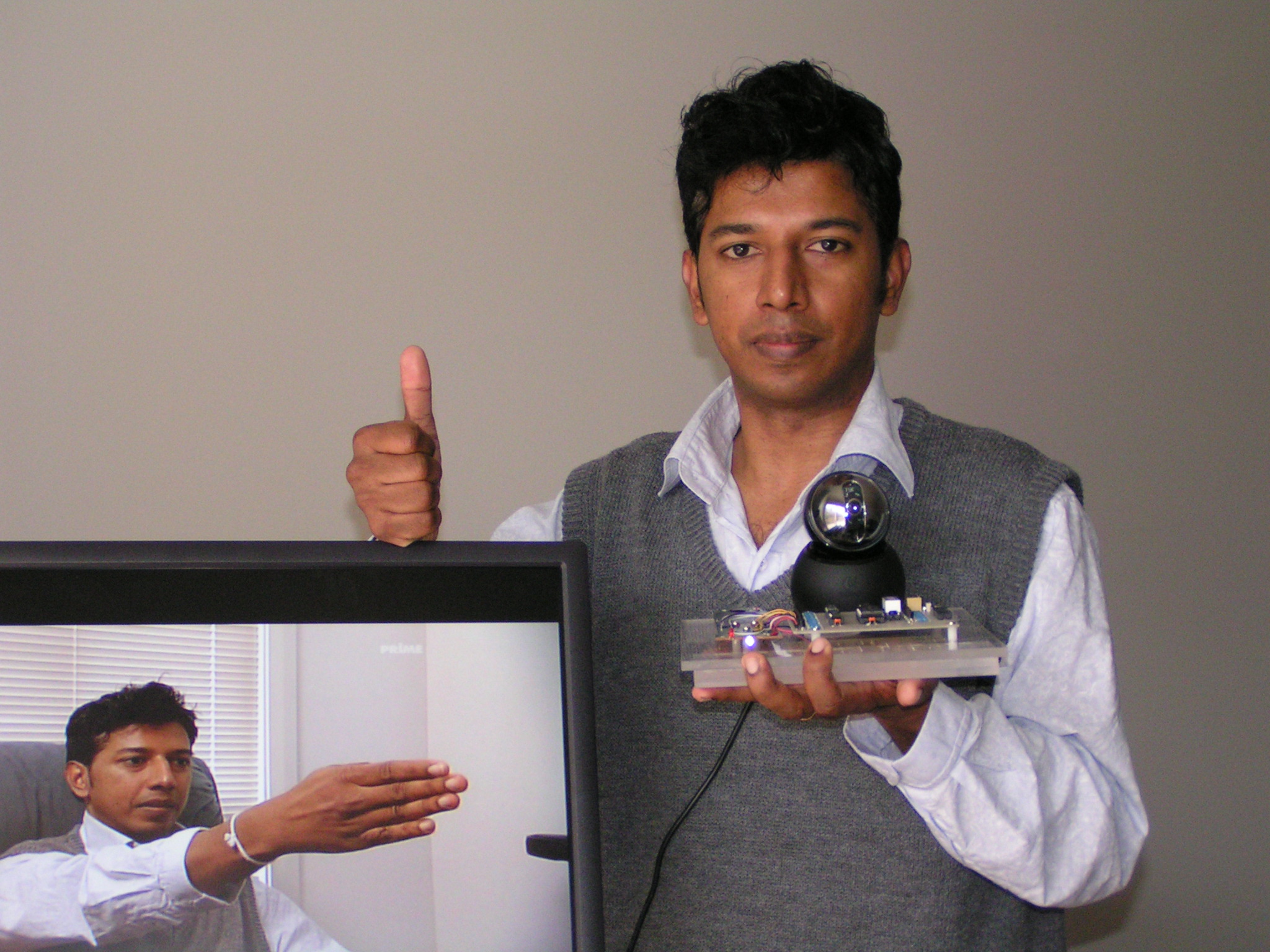Hand gesture recognition technology now a reality

In 1755, the first public school for deaf children was founded in Paris. After the school’s founder observed deaf people signing with their hands in the streets, the first language was developed based on a combination of hand shapes and facial expressions to convey meaning.
In an attempt to validate the new sign language it was tied to French grammar, making it the official language of the deaf.
ADVERTISEMENT
The sign language – which used hand gestures, body language and lip patterns instead of sound to convey a speaker’s thoughts – then mimicked spoken dialect by changing from region to region.
Dr Prashan Premaratne, lecturer in the School of Electrical, Computer and Telecommunications Engineering at the University of Wollongong, has spent almost three years developing a method for changing the channel on your TV through a system of seven preset hand gestures. It is sign language for your AV.
“This technology, the wave controller, is designed to replace the remote control for AV equipment in the lounge,” Prashan says.
The idea for the wave controller was planted by his wife, Vimarshana, who raised the possibility of using hand gestures to control the TV after losing their remote control. Prashan drew from his background in classifying radar images for the Australian Defence Force in coming up with the theoretical backing for his research.
“During my past six months working for the Centre for Sensor Signal and Information Processing, which is affiliated with the Defence Science and Technology Organisation, I developed a radar image ship classification system.
“I called this new development the ISAR Ship Classification: an Alternative Approach. I developed a theory that was as good as the existing approach yet very simple. When I moved to the University of Wollongong, I used my developed theory to classify hand gestures, and that is why it has been so successful and why nobody could do it before me.”
After building a prototype of the controller, Prashan demonstrated it to Quang Nguyen, a student at the Australian National University Research School of Information Science and Engineering in Canberra. Quang was keen to develop the system as part of his final year thesis project in 2005.
“Everybody relies on remote controls to manage an increasing number of items, including TVs, set-top boxes, DVD players and stereos, and this range of goods will continue to increase,” Prashan says.
“Apart from the frustration of sometimes mislaying the remote control just when you need it, remotes tend to have different sets of commands that have to be mastered.
“During 2005, we managed to build a very robust system with very high accuracy.”
The system comprises a web camera, gesture processing unit, hardware interface for the control unit and a universal remote built into the control unit. The webcam captures hand gestures and the software converts them into a signal that operates the remote controller.
The series of commands devised by the researchers included switching the equipment on, turning the volume up and down, changing channels, play and stop.
“The wave controller captures any hand gestures that the user makes, and the processor tries to ‘understand’ them. If a deliberate gesture is detected that is matched to the preset gestures, then this signal is used to control the hi-fi equipment that the user intended.
“We spent a considerable amount of time in selecting these hand gestures. We started with a set of 43 hand gestures and through research found that certain gestures confused the system and were eliminated. For instance, the system can make an error trying to differentiate between two fingers pointing and three fingers pointing.
“The set we have chosen are very distinct and resulted in very high system accuracy.”
Prashan says the development of a hand gesture system isn’t the first time researchers have explored ways of simplifying remote controls or eliminating the need for them.
“People have tried to replace remote controls with voice recognition or glove-based devices but with mixed results.
“We set out to tackle this problem with a limited set of hand gestures that were distinctive and offered high accuracy. The solution we came up with not only achieves this but also uses low processing power, proved very robust in different lighting conditions and operated in real time.”
He says voice recognition will never be useful for such control in the lounge room, as it is impossible to distinguish between commands and background chat. Glove-based technology is not practical and does not offer any benefits over the remote.
“Our device improves on all these drawbacks and has many advantages over the remote.”
Having finished a fully operational prototype two years ago, Prashan is waiting for a manufacturer to commercially produce the wave controller.
He believes the technology will soon be taken up by remote control manufacturers, and a product could be on the market within two years.
-
ADVERTISEMENT
-
ADVERTISEMENT

